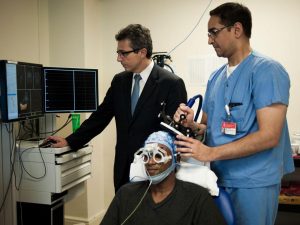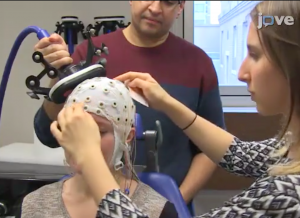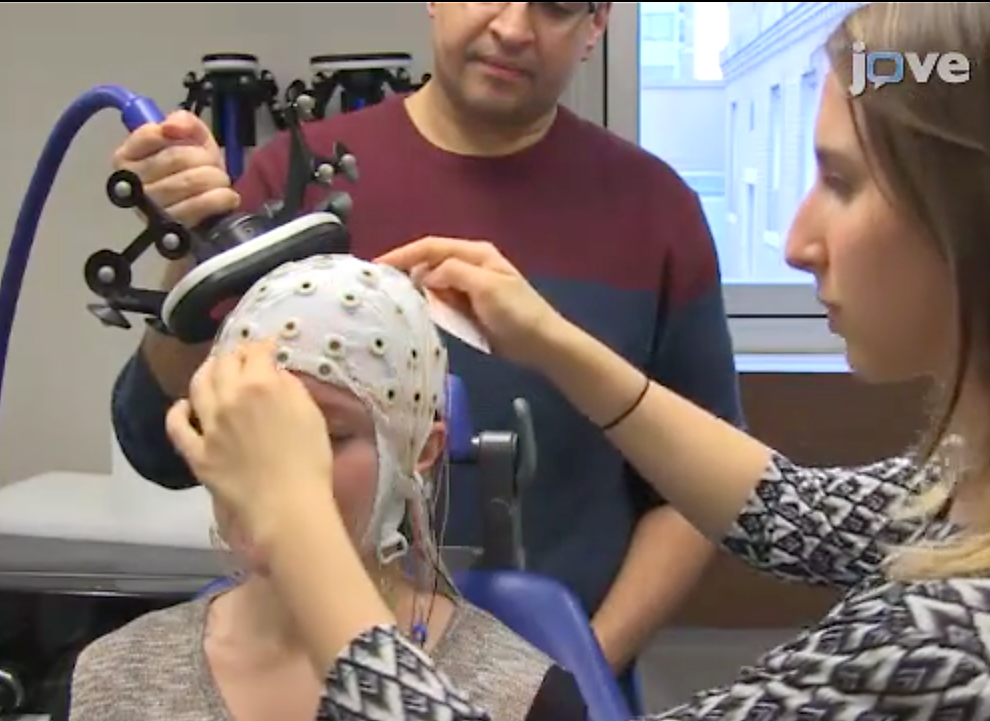Mouhsin Shafi, M.D., Ph.D. our Spotlight Scientist highlights the importance of biomarkers in epilepsy research and the use of video methods to advance scientific rigor and reproducibility.
Mouhsin Shafi is a neurology faculty and scientist at Harvard Medical School. He recently published a study in JoVE Video Journal demonstrating the use of clinical techniques to identify and understand the physiological significance of abnormal brain connectivity in human diseases (such as epilepsy).

JoVE caught-up with Mouhsin Shafi to discuss his research focus and to get some insight into the challenges and future of neuroscience research.
Q. Could you highlight your overall research focus?
A. My overall research focus is to better understand brain function and pathology.
It primarily focuses on the development and application of electrophysiological tools to study human brain function and connectivity. These tools help with the diagnosis and management of neuropsychiatric disorders such as epilepsy and Alzheimer’s Disease.
Traditionally we used to look at brain function passively, but now we are using brain stimulation techniques to produce a transient focal perturbation of brain activity, and study how the brain responds to that perturbation.
The second aspect or goal of my research is to use non-invasive stimulation techniques to modulate abnormal brain activity for therapeutic purposes.
This research technique can be used to understand normal brain function and the abnormalities that occur in neurological and psychiatric disorders. It is important to identify how different brain regions interact with each other, and how this corresponds to an individual’s ‘cognitive profile’. You can also use these techniques to evaluate the changes in brain reactivity both locally (where you stimulated) and in other brain regions in different disease processes, and then try to correct these abnormalities using stimulation. It is important to explore normal brain function and what goes wrong in disease pathology. Similar approaches can be used to comprehend other diseases besides epilepsy, such as Alzheimer’s and schizophrenia.

Q. What made you decide to choose video format for publishing this method? Who might benefit from your research publication in JoVE Video Journal?
A. These experiments are tricky with several different steps and a video format helps to walk someone through these steps. In our center, one of our major priorities is to have standardized protocols, and videos are particularly helpful in training new people such as research assistants, graduate students, and post-doctoral trainees. This video publication will help us in training new research students.
Our JoVE video publication can benefit our research collaborators, other labs, and people in the neuroscience community in general who study systems neuroscience in humans. For example, a collaborator of ours in Chicago watched the video to get a better sense of what is involved during one of these experimental sessions.

Q. What value can visual science have specifically for neuroscience research?
A. One of the main concerns in neuroscience and science, in general, is reproducibility and rigor. Clear communication of methods is critical in promoting rigor and producing reproducible results. However, just reading about methods often does not communicate as well as having a video resource such as JoVE. Our video publication shows how we approach challenges in applying these neurophysiology-techniques, and we are hoping that it will help other researchers who would want to use similar techniques to answer a range of neuroscience research questions. We can then compare our results with other labs, once they understand precisely what we did by watching our JoVE video.
Q. What do you think are some of the challenges in epilepsy research in the biomedical field?
A. One of the key problems is that we do not have great biomarkers for epilepsy. The main clinical tool available for epilepsy diagnosis is electroencephalography (EEG), and it is primarily a qualitative (“Does this EEG have epileptiform discharges or seizures?”) rather than a quantitative tool. A related problem is that currently there is no biomarker which predicts either of the following:
- Likelihood of an individual patient developing epilepsy after a brain injury
- Likelihood of further seizures in patients with a single seizure or epilepsy
- Response to therapy when a patient is started on medications
Just to the latter point, there are currently over 20 anti-seizure medications available for patients with epilepsy, but identifying the right medicine and dose for a particular patient is generally a trial and error process. In addition, one-third of patients will not have their seizures controlled with medications and will require additional treatments, but as of now, there is no way to predict which patients will have such difficulties. We want to see more quantitative and less subjective results (e.g. is this a spike or not). We need to develop new tools to help these patients, and hopefully, brain stimulation techniques can contribute.


